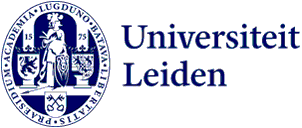
How NeCEN helped develop the Johnson & Johnson Covid-19 vaccine
The Phase 3 clinical trial results of the promising Covid-19 vaccine of Johnson & Johnson are expected this month. The Dutch electron microscopy facility NeCEN helped develop the company’s vaccine, and they have now published their scientific findings in Nature Communications.
Freezing microscopes
Already in January 2020, Johnson & Johnson started working on a coronavirus vaccine. The lion’s share of the work has been done by Janssen Pharmaceutica, a Belgium-based division of Johnson & Johnson, which also has a branch at the Leiden Bio Science Park in the Netherlands. At the same site, you can find the Dutch facility NeCEN, which is part of Leiden University. NeCEN is a national and international research facility for cryo-electron microscopy, an imaging technique that takes place at dazzling temperatures of around minus 196 degrees Celsius.
‘We have been working with Janssen for the past four years,’ says head of NeCEN Ludovic Renault. ‘Our facility has two flagship instruments, the state-of-the-art Titan Krios electron microscopes. We are the only ones in the Netherlands, and we provide access for scientists from the Netherlands but also abroad. We also work with companies such as Janssen. They contacted us in May, and we were of course very happy to help.’

Spiky proteins
Before we dive into how NeCEN helped Janssen with their vaccine, let’s have a look at the scientific approach of the pharmaceutical company. Similar to the Pfizer-BioNTech and Moderna vaccines, the Janssen vaccine focuses on so-called spike proteins, which are the proteins the coronavirus uses to enter human cells. The vaccine trains our immune system to recognise these proteins, readying it to protect our body against future assaults of the coronavirus.

So far for the similarities. But while the vaccines of Pfizer and Moderna are based on RNA, the Janssen vaccine uses DNA to do this. In addition, Janssen inserted this DNA in an adenovirus – a common cold virus – to develop their vaccine. Janssen’s mother company Johnson & Johnson successfully used this technique last year, when they developed a vaccine for ebola. Due to this technique, the Janssen Covid-19 vaccine can be stored at much higher temperatures of around 2-8 degrees Celsius. Currently, the company is testing whether their coronavirus vaccine can be administered with a single shot, instead of the two shots that the Pfizer and Moderna vaccines require.
Helping hand
In order to develop their vaccine, Janssen had to produce a specific type of spike protein, the so-called S-trimer. ‘They already made multiple versions of these proteins when they contacted us in May,’ says Renault. ‘But they didn’t know yet which of these was forming a closed S-trimer, the version they needed for their vaccine. So, with our equipment, we helped them select the right one.’
Measuring at an atomic scale
Cryo-electron microscopy, the technique NeCEN is specialised in, allows for the visualisation of biological samples – such as proteins, bacteria and viruses – in their near-native states. Renault: ‘With our microscopes, we freeze the sample and view them at a resolution of 3 angstrom or better, which is roughly the size of an atom. By processing all the data, we can build an atomic model to create a 3D shape of the sample. Wen Yang, a staff scientist at NeCEN, also supported the early screening efforts of the different S-trimer constructs.’
Efficient vaccine
As expected, the researchers at NeCEN found two conformations of the spike protein Janssen developed, a closed trimer and an open trimer. ‘The presence of this closed trimer was important to Janssen, as this results in a more efficient vaccine,’ Renault says. ‘The spike protein binds to human cells when it is in the opened conformation, but for the majority of the time, it is in a closed conformation. Thus it was important to generate a protein variant with a vast majority of closed trimers, so that the body’s immune response is trained in the right way and the vaccine would be the most efficient. By finding out which S-trimer construct was showing a higher percentage of closed version, we helped Janssen make the right choice in their process.’
Facilitating important research
Renault is very happy with the collaboration. ‘This research perfectly validates what NeCEN is about: providing services to facilitate the research of others. We are really proud that we could help, it’s very rewarding that we can contribute to developing a vaccine against a pandemic. Let’s hope the Phase 3 trial results are good!’

Covid-19 research
NeCEN was also involved in other Covid-19 research. During the first lockdown last year, they provided researchers of the Leiden University Medical Center (LUMC) access to their facilities, resulting in a Science paper. The LUMC identified a missing link in the replication process of coronaviruses, providing a potential new starting point for developing antiviral drugs.
> Read more here
Paper
Jarek Juraszek et al. Stabilizing the closed SARS-CoV-2 spike trimer, Nature Communications (11 January 2021)
Text: Bryce Benda
